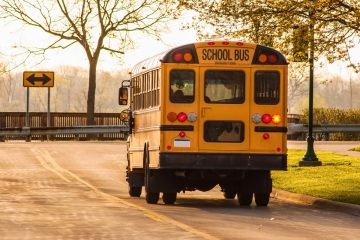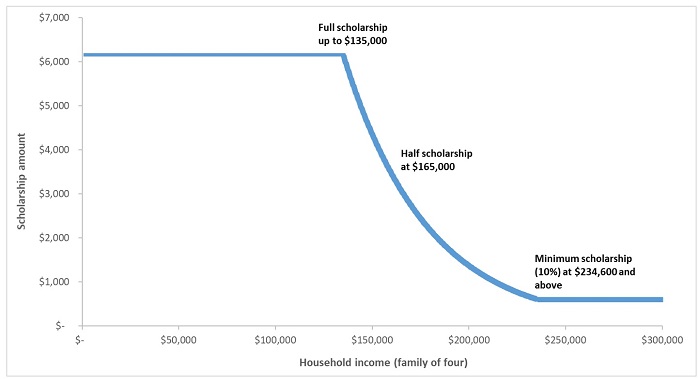Now that the latest state budget is officially in the books, it’s safe to say that school choice stole the show. Every student in Ohio is now eligible for an EdChoice voucher, though higher-income families will receive reduced scholarship amounts. Charter schools, which have long been underfunded compared to their traditional district counterparts, received much-needed funding boosts via the Quality Community School Support Fund, a brand-new equity supplement, and increased facilities funding. Lawmakers also tackled school transportation, which has traditionally been a sore spot for choice programs, and held the line on charter school accountability.
These changes will provide thousands of families with more high-quality choices. But not everyone is pleased about parents and kids having more options. Long-time school choice critics called the voucher expansion “bad public policy.” And although traditional school districts received a 12 percent boost in foundation aid, the Ohio Federation of Teachers is still claiming that Ohio’s voucher “scheme” will decrease state support for public schools. Choice opponents often make similar claims about charters, even though studies from Ohio and elsewhere show that school choice programs don’t hurt district achievement or funding. In fact, Ohio data demonstrate that per-pupil funding actually increased between 2000 and 2019 in districts with higher concentrations of charters and private schools.
Over the years, Fordham has spilled plenty of ink arguing that Ohio’s education system should be student-focused and not system-focused. Being student-focused means recognizing that kids aren’t dollar signs and that no school, regardless of its governance structure, is entitled to students or the funding that comes with them. It also means acknowledging that different kids have different needs, and that sometimes their neighborhood public school isn’t the best place to meet those needs. But for some advocates of traditional public education, that’s sacrilege. They seem to believe that district schools—and only district schools—should get to educate kids. Which is exactly why they should wholeheartedly support making open enrollment mandatory in Ohio.
As a reminder, open enrollment is a school choice model that allows students to attend public schools other than the one they’re assigned to by their district of residence. There are two types: intra-district open enrollment, which allows students to transfer from one school to another within their resident district; and inter-district, which allows students to attend a school in a district other than the one in which they live. Ohio has allowed districts to admit students who live outside their residential boundaries since 1989, but district participation has always been voluntary. It’s up to local school boards to determine whether nonresident students can enroll, and districts that choose to participate can also decide whether to accept students from only neighboring districts, or from anywhere in the state.
Approximately four in five Ohio districts accept students via inter-district open enrollment. In 2022, just under 80,000 students open enrolled, adding up to nearly 5 percent of Ohio’s public school student population. Many of the districts that refuse to enroll nonresident students are located in affluent suburban areas surrounding the state’s largest cities. The students living in these cities are largely low-income and Black or Hispanic—the precise student demographics that a 2017 Fordham study found benefit most from open enrollment. But because more than one hundred districts surrounding Ohio’s urban areas refuse to participate, thousands of students are locked out of opportunity thanks to district boundary lines that aren’t sacrosanct but are treated as such despite their troubling history. Even more worrisome, districts’ refusal to participate in open enrollment can perpetuate patterns of segregation. It’s educational redlining.
If traditional district advocates are serious when they say that Ohio’s future depends on all kids receiving a great education regardless of their race, zip code, or family income, then they should throw open their doors and welcome all families, not just those who can afford to move. If they’re being honest when they claim that traditional public schools are open to everyone, then they should prove it by supporting open enrollment. If they’re as concerned about school diversity as they claim to be in their ongoing voucher lawsuit, then mandatory open enrollment should be right up their alley, as it would allow disadvantaged students to attend school with more advantaged peers. And if lawmakers’ efforts to bolster charters and private school choice during the recent state budget are raising concerns about the future of public schools, then open enrollment presents the perfect opportunity for the education establishment to champion district schools and show Ohioans all that they have to offer.
For some folks, this might be their first foray into supporting school choice. What can they do to push for expanded open enrollment? A recent report from the national education nonprofit EdChoice (which is distinct from Ohio’s voucher program) is a great place to start. Based on the report’s findings, here are a few recommendations.
1. Require all Ohio districts to participate in inter-district open enrollment.
Instead of allowing districts to opt out, state law should require all districts to opt in, unless the district is already at capacity. Declining enrollment in many districts across Ohio will likely ameliorate capacity concerns, but it’s important for state policy to acknowledge them.
2. Ensure that parents can easily find which schools have open seats.
Districts should be required to consistently and clearly update their current open enrollment status on their websites. Lawmakers should consider following the lead of states like Arizona, Florida, and Oklahoma, where districts are required to post their open seats by school and grade level, and to update those numbers periodically.
3. Ensure that open enrollment is available to all students, without them needing to meet certain criteria.
Once they start accepting enrollment applications from nonresident students, districts should be required to follow what the EdChoice report refers to as an “equitable selection process.” A lottery system, for example, to allocate available seats to open enrollees could help ensure fairness. Lawmakers should also prohibit discrimination. For example, districts should be forbidden from asking parents to disclose their student’s IEP status when applying for open enrollment.
4. Address transportation barriers.
Like many other forms of choice, one of the biggest barriers for open enrollment is transportation. If students can’t get to a school, then it doesn’t matter whether they’re able to enroll. State lawmakers could address this issue by reimbursing parents for transporting their children. Ohio already does this for families of students attending charter and private schools when their resident district deems it “impractical” to transport them, but does not offer a payment in lieu of transportation for open enrollees.
***
For school choice opponents focused on systems and not kids, this year’s budget likely feels like a loss. It doesn’t matter that districts received a 12 percent bump in funding, that charter schools in Ohio are more accountable for their results than traditional public schools, or that Ohio’s private school choice program hasn't made the sky fall. If the options offered to parents aren’t traditional district schools, then they’re a no-go.
But Ohio’s inter-district open enrollment program is comprised of traditional district schools. Research shows it has a positive impact on disadvantaged students. And if public school advocates mean it when they say that every child deserves a great education, then they have to acknowledge that for some kids, that education will come from somewhere other than a zoned public school. If they’re not ready to admit that charter and private schools can meet students’ needs, fine. But their failure thus far to fully support open enrollment is direct evidence that they’re putting systems and adult interests ahead of kids.







